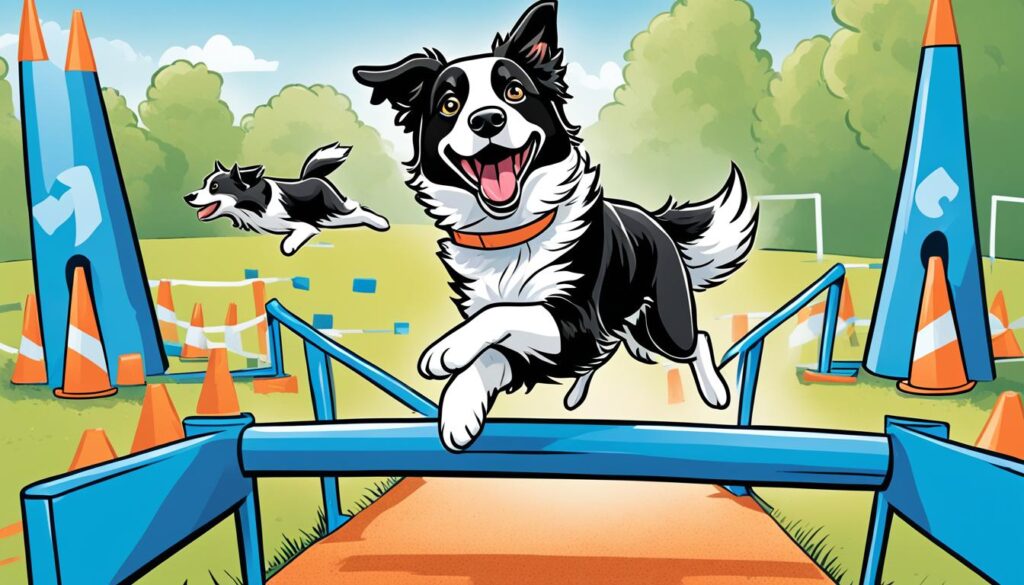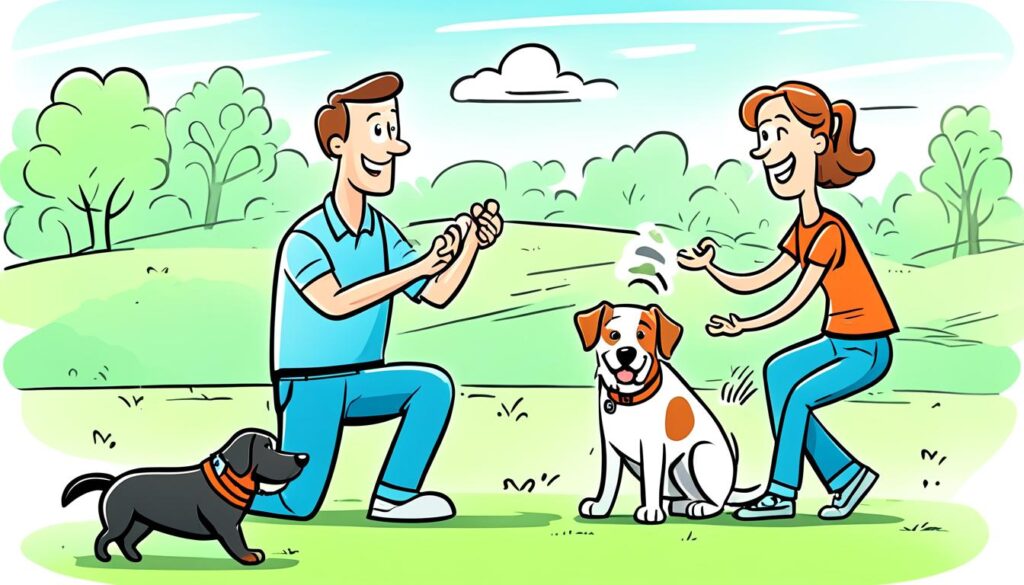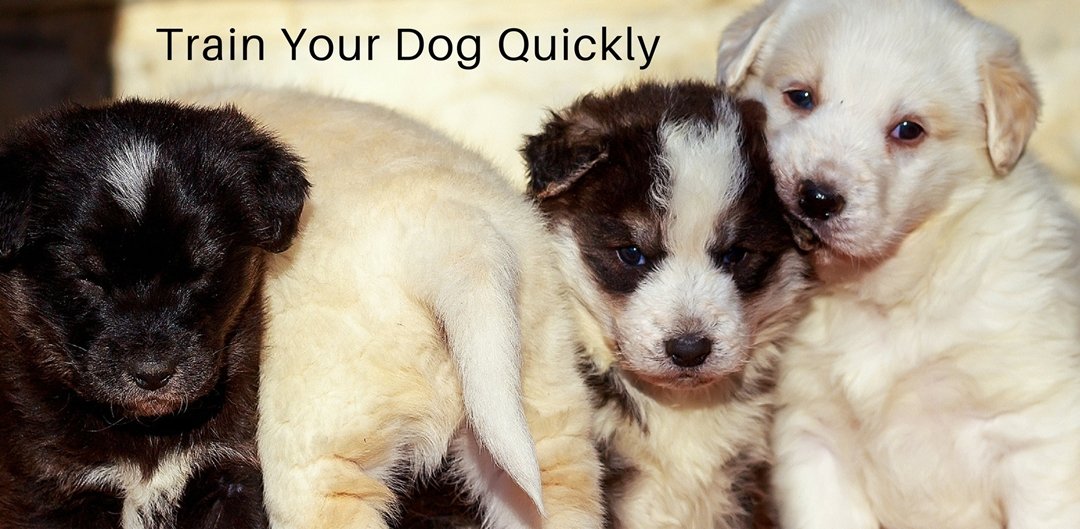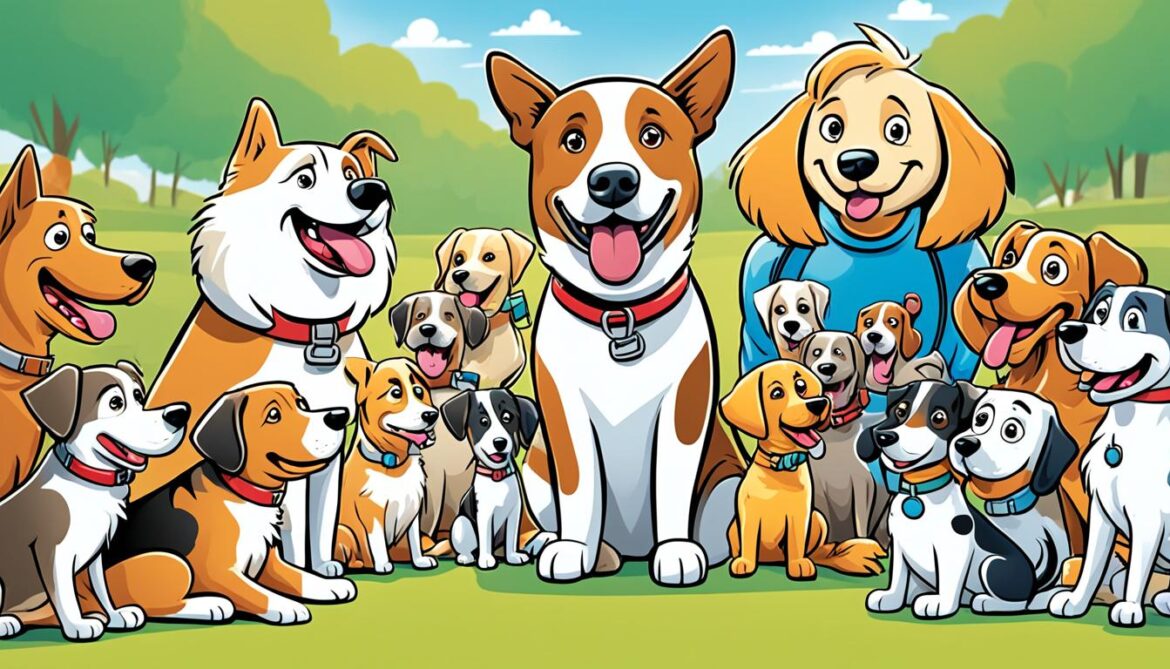Imagine coming home to a wagging tail, a happy face, and a dog that listens to your every command. Training your dog isn’t just about teaching them to sit, stay, and roll over. It’s about fostering a strong bond, ensuring their safety, and creating a harmonious relationship that will last a lifetime.
As a dog owner myself, I understand the joys and challenges that come with training a furry companion. From puppyhood to adulthood, every stage of their development requires patience, consistency, and expert guidance. That’s why I’ve gathered a wealth of knowledge and practical tips from top trainers in the industry to help you train your dog to be the well-mannered, obedient, and fabulous companion you’ve always dreamed of.
Whether you’re embarking on puppy training, tackling canine behavior modifications, or looking to enhance your dog’s obedience skills, this article is your ultimate guide to success. We’ll explore positive reinforcement training methods, leash training techniques, dog agility training, crate training, and troubleshoot common training challenges. Get ready to unlock your dog’s full potential and unleash their inner superstar!
Key Takeaways:
- Training your dog enhances the bond between you and your furry friend.
- Consistency and patience are key to successful dog training.
- Positive reinforcement training methods are highly effective.
- Leash training promotes enjoyable walks and better behavior.
- Dog agility training is a fun way to keep your dog physically and mentally stimulated.
Understanding Dog Behavior and Psychology
When it comes to training your beloved canine companion, understanding their behavior and psychology is essential. By gaining insight into how dogs think and learn, you can tailor your training methods to effectively shape their behavior and address any behavioral challenges. In this section, we’ll explore the fundamentals of dog behavior and psychology, providing you with valuable knowledge to enhance your training techniques.
At the core of successful canine behavior modification is positive reinforcement training. This training philosophy focuses on rewarding desired behaviors, encouraging your dog to repeat them. Positive reinforcement involves using rewards such as treats, praise, and affection to reinforce good behavior, rather than resorting to punishment or harsh techniques. This method not only strengthens the bond between you and your furry friend but also creates a positive and enjoyable training experience for both of you.
Dogs are highly social animals, and their behavior is influenced by a variety of factors, including genetics, early life experiences, and environmental stimuli. By comprehending these factors, we can gain valuable insights into their behavior patterns and motivations.
“The study of dog behavior and psychology allows us to better understand their needs and how they perceive the world. This knowledge forms the foundation for effective training techniques that address unwanted behaviors and foster a harmonious relationship between dogs and their human companions.” – Dr. Olivia Hamilton, Canine Behavior Specialist
Canine Behavior Modification
One of the key aspects of understanding dog behavior is recognizing the need for behavior modification. Unwanted behaviors such as excessive barking, aggression, separation anxiety, or destructive chewing can be challenging for dog owners to manage. Canine behavior modification focuses on addressing these behaviors through training techniques that promote positive change.
Positive reinforcement training is a powerful tool in canine behavior modification. By rewarding desired behaviors, such as calmness or appropriate social interactions, and redirecting or ignoring unwanted behaviors, you can effectively shape your dog’s behavior over time.
The Power of Positive Reinforcement Training
Positive reinforcement training is based on the principle of rewarding desirable behaviors. By using rewards that are meaningful to your dog, such as treats, toys, or praise, you can reinforce behaviors you want to see more of.
When utilizing positive reinforcement training, it’s important to:
- Clearly define the behavior you want to reinforce
- Consistently reward the behavior immediately after it occurs
- Use rewards that are motivating and meaningful to your dog
- Be patient and consistent in your training efforts
With time and practice, positive reinforcement training can help modify unwanted behaviors and establish a strong bond of trust and cooperation between you and your dog.
The Role of Body Language in Canine Behavior
In addition to understanding the principles of positive reinforcement training, observing and interpreting your dog’s body language is crucial in understanding their behavior. Dogs communicate through a variety of visual cues, including facial expressions, posture, tail wagging, and ear position.
By learning to recognize and respond to your dog’s body language, you can better understand their emotions and address any potential issues or stressors. This understanding enables you to create a safe and comfortable environment for your dog.
| Behavior | Signs | Action |
|---|---|---|
| Anxiety | Pacing, panting, trembling, lip licking, yawning | Create a calming environment, use desensitization techniques, consult a professional if needed |
| Aggression | Growling, showing teeth, stiff body posture, raised hackles | Ensure safety, seek professional guidance from a certified dog behaviorist |
| Fear | Tail between legs, crouching, avoiding eye contact | Provide reassurance and positive experiences, gradually expose them to the fear-inducing stimulus |
| Happiness | Relaxed body, wagging tail, playfulness | Encourage and reinforce positive behaviors, provide plenty of love and affection |
Understanding your dog’s body language allows you to better respond to their needs, ensure their well-being, and strengthen the bond between you.
By developing a comprehensive understanding of dog behavior and psychology, and utilizing positive reinforcement training techniques, you can effectively shape your dog’s behavior and strengthen your relationship. In the next section, we will focus on establishing a solid foundation with puppy training, setting the stage for a well-behaved and happy companion.
Establishing a Solid Foundation with Puppy Training
When it comes to training your new furry friend, starting early is key. Puppy training is the foundation for establishing good behavior and obedience in your dog. By providing them with the right knowledge and skills from the beginning, you can set them up for a lifetime of success. In this section, we’ll explore the essential aspects of puppy training that will help your pup become a well-behaved member of your family.
The Importance of Socialization
Socialization is a critical part of puppy training. It involves exposing your pup to different environments, people, and other animals to help them develop proper social skills. When puppies are properly socialized, they are more likely to grow up into confident and friendly dogs. So, make sure to introduce your little one to a variety of experiences early on.
Socialization is the key to raising a happy and well-adjusted dog. By exposing your puppy to different situations, you can help them develop the skills they need to navigate the world with confidence.
Housebreaking Made Easy
One of the first challenges you’ll encounter as a new puppy owner is housebreaking. Teaching your pup where to potty is essential for a harmonious home. When it comes to housebreaking, consistency is key. Establish a regular schedule for meals, bathroom breaks, and playtime, and be patient with your pup as they learn this important skill.
Mastering Basic Commands
Basic commands like “sit,” “stay,” and “come” are fundamental to a well-behaved dog. Teaching your puppy these commands early on will make your life easier and ensure their safety. Use positive reinforcement training methods to reward good behavior and motivate your pup to learn.
Positive reinforcement training is the most effective way to teach your puppy. By rewarding good behavior with treats, praise, or play, you can make the learning process enjoyable and fun for both of you.
Crate Training for a Peaceful Home
Crate training provides your puppy with a safe and secure space they can call their own. It also helps with housebreaking and prevents destructive behaviors when you are away. Follow a gradual introduction process, making the crate a positive and comfortable place for your pup. With patience and the right training techniques, your puppy will learn to love their crate.
| Puppy Training Tips | Benefits |
|---|---|
| Start training early | Establishes good behavior habits |
| Use positive reinforcement | Motivates and rewards your puppy |
| Be consistent with commands | Makes training more effective |
| Practice patience | Builds a strong bond with your puppy |
With the right approach to puppy training, you can lay the foundation for a well-behaved and happy dog. Remember to be patient, consistent, and use positive reinforcement techniques. Soon enough, your puppy will become a model canine citizen!
Mastering Leash Training for Better Walks
Walking your dog should be a pleasant experience for both you and your furry companion. However, if your dog tends to pull on the leash or exhibit erratic behavior, it can turn a peaceful stroll into a frustrating struggle. Fortunately, with the right leash training techniques and positive reinforcement, you can teach your dog to walk politely on a leash.
Understanding Leash Training
Leash training is all about teaching your dog to walk calmly by your side, without pulling or dragging you in different directions. It requires consistency, patience, and positive reinforcement to effectively communicate your expectations to your four-legged friend.
When starting leash training, it’s important to choose the right leash and collar or harness. A properly fitted leash and a comfortable collar or harness will ensure your dog’s safety and comfort during walks.
The Basics of Positive Reinforcement
Positive reinforcement training is a reward-based method that focuses on praising and rewarding desired behaviors. By using treats, verbal praise, and affection, you can encourage your dog to follow your commands and exhibit good leash manners.
Remember, punishing or using aversive techniques can lead to fear and anxiety, undermining the trust and bond between you and your dog.
When your dog walks calmly on the leash, reward them with a treat and praise. Consistently reinforce this behavior to reinforce the association between staying by your side and positive rewards. Over time, your dog will learn that walking nicely on the leash leads to good things.
Techniques for Leash Training
Here are some effective techniques to help you master leash training:
- Start in a quiet and familiar environment to minimize distractions.
- Use a short leash to maintain control and keep your dog close to your side.
- Walk with confidence and assertiveness to establish yourself as the leader.
- When your dog pulls on the leash, stop walking and stand still. This teaches them that pulling won’t get them anywhere.
- Once your dog stops pulling, resume walking and reward them for their good behavior.
- If your dog continues to pull, change direction abruptly. This will redirect their attention and discourage pulling.
Consistency is key when leash training. Practice these techniques regularly and gradually increase the distractions as your dog becomes more adept at walking calmly on the leash.
Visual Example: Correct Leash Positioning
Take a look at the image below for a visual guide on correct leash positioning:
| Common Leash Training Mistakes | Correct Techniques |
|---|---|
| Allowing your dog to pull ahead | Use the stop-and-stand technique, rewarding your dog when they walk calmly |
| Yanking or jerking the leash | Use positive reinforcement instead of punishment, providing rewards for good behavior |
| Inconsistency in training | Practice leash training regularly and reinforce good behavior consistently |
| Using a retractable leash | Opt for a standard leash to maintain control and communication with your dog |
By avoiding these common mistakes and implementing positive reinforcement techniques, you can effectively master leash training and enjoy peaceful walks with your well-behaved dog.
Unleashing the Fun with Dog Agility Training
Dog agility training is not only a great way to keep your dog physically active but also a fun activity that strengthens the bond between you and your canine companion. In this section, we will explore the exciting world of dog agility training and provide you with valuable tips on how to get started, set up agility courses, and train your dog to navigate various obstacles using positive reinforcement techniques.
Getting Started with Dog Agility Training
If you’re new to dog agility training, it’s important to begin with the basics. You’ll need to establish a strong foundation of obedience before diving into more advanced agility exercises. Start by ensuring your dog is comfortable with basic commands like sit, stay, and come. This will make it easier to teach them the specific commands needed for agility training.
Next, you’ll need to gather the necessary equipment for your agility course. This can include jumps, tunnels, weave poles, and contact obstacles. You can either purchase specialized agility equipment or get creative and build your own using everyday items.
Once you have the equipment ready, set up a designated area for your agility course. This can be in your backyard or a local park. Make sure the space is safe and free from any hazards that could potentially harm your dog.
Positive Reinforcement in Dog Agility Training
Positive reinforcement training is highly effective and essential in dog agility training. This training method focuses on rewarding your dog for desired behaviors rather than punishing them for mistakes. By using positive reinforcement techniques such as treats, praise, and play, you will motivate and encourage your dog to perform agility tasks with enthusiasm.
During training sessions, always reward your dog with treats and praise immediately after they successfully complete an agility obstacle. This positive reinforcement will reinforce the behavior you want to encourage, making your dog more likely to repeat it in the future.
Remember to be patient and consistent with your training. Break down each obstacle into smaller steps and gradually increase the level of difficulty as your dog becomes more proficient. Celebrate every small achievement and progress made by your furry friend.
Your Dog’s Safety and Well-being
While dog agility training is a fun and stimulating activity, it’s vital to prioritize your dog’s safety and well-being at all times. Here are some essential safety tips to keep in mind:
- Ensure your dog is in good physical health before starting agility training. Consult with your veterinarian to ensure they are fit for the activity.
- Never force your dog to participate in agility training if they show signs of fear or discomfort. Always prioritize their comfort and well-being.
- Regularly inspect the agility equipment for any signs of wear and tear. Replace or repair damaged equipment to prevent accidents.
- Provide plenty of water breaks and rest periods during training to prevent exhaustion.
By following these safety guidelines and incorporating positive reinforcement techniques, you can create a safe and enjoyable environment for your dog to unleash their inner agility superstar.

Now that you have a better understanding of dog agility training, it’s time to embark on this exciting adventure with your four-legged friend. Remember to approach training with patience, positivity, and lots of enthusiasm. Enjoy the journey of bonding with your dog while unleashing the fun and excitement of dog agility training.
The Benefits of Crate Training for Your Dog
When it comes to managing your dog’s behavior and creating a safe space for them, crate training can be a game-changer. Crate training provides numerous benefits, both for you and your furry friend. In this section, we will explore the advantages of crate training, how to introduce your dog to a crate, and essential tips for crate training success, all while utilizing positive reinforcement techniques.
Benefits of Crate Training
Crate training offers several benefits for both the dog and the owner. Here are some key advantages:
- Safe Space: A crate provides a secure and comfortable environment where your dog can relax and retreat to when they need some downtime. It becomes their own cozy den.
- Potty Training Aid: A properly sized crate can assist with housebreaking your dog. Dogs instinctively avoid soiling their sleeping area, making the crate an effective tool for potty training.
- Prevents Destructive Behavior: Crating your dog when you’re unable to supervise them eliminates the risk of destructive behavior, such as chewing on furniture or getting into hazardous substances.
- Travel Companion: If you frequently travel with your dog, crate training makes it easier for them to adapt to new environments and provides a familiar space, reducing anxiety during trips.
Introducing Your Dog to a Crate
The key to successful crate training is introducing it gradually and making it a positive experience for your dog. Here’s how:
- Choose the Right Crate: Select a crate that is appropriately sized for your dog, providing enough room for them to stand, turn around, and lie down comfortably.
- Make it Inviting: Add soft bedding, favorite toys, and treats to make the crate appealing and enticing. This will create a positive association with the crate.
- Go Slow: Start by leaving the crate door open and encouraging your dog to explore it at their own pace. Allow them to enter and exit freely without any pressure.
- Mealtime in the Crate: Gradually introduce mealtimes inside the crate. This will reinforce the positive association and help your dog feel more comfortable spending time in the crate.
- Close the Door: Once your dog is comfortable entering the crate, start closing the door for short periods while you’re present. Gradually increase the duration while ensuring your dog remains calm and relaxed.
Tips for Crate Training Success
Follow these helpful tips to ensure a successful crate training experience:
- Patience is Key: Crate training takes time and patience. Avoid rushing the process and allow your dog to adjust to the crate at their own pace.
- Use Positive Reinforcement: Reward your dog with praise, treats, or their favorite toy when they enter the crate or display positive behavior inside. This will reinforce the idea that the crate is a safe and enjoyable space.
- Never Use the Crate for Punishment: The crate should never be used as a form of punishment. It should be a positive and comforting space for your dog.
- Gradually Increase Crate Time: As your dog becomes more comfortable, gradually increase the duration of time they spend in the crate. Begin with short intervals and gradually extend them as your dog adapts.
By crate training your dog using positive reinforcement techniques, you can provide them with a safe haven while effectively managing their behavior. Remember to introduce the crate gradually, make it inviting, and be patient throughout the process. Soon enough, your furry friend will view their crate as a cozy retreat they willingly enter on their own.
Troubleshooting Common Training Challenges
Training dogs can be a rewarding and fulfilling experience, but it can also come with its fair share of challenges. Fortunately, with the right approach and expert guidance, you can overcome these obstacles and continue making progress in your dog’s training journey. In this section, we’ll address some common training challenges and provide practical tips to help you navigate through them successfully.
1. Dealing with stubborn behavior:
If your dog is displaying stubborn behavior and seems reluctant to follow commands, it’s essential to assess the training methods you’re using. Consider incorporating positive reinforcement techniques, such as rewarding desired behaviors with treats or praise. This approach can motivate your dog to comply and make the training process more enjoyable for both of you.
2. Tackling separation anxiety:
Separation anxiety can be distressing for both dogs and their owners. If your dog becomes anxious or exhibits destructive behavior when left alone, start by gradually desensitizing them to your departures. Practice short absences initially and gradually increase the duration as your dog becomes more comfortable. Providing engaging toys and creating a safe, comforting environment in your absence can also help alleviate separation anxiety.
3. Addressing leash reactivity:
If your dog exhibits reactive behavior, such as barking or lunging aggressively while on a leash, it’s crucial to address the underlying causes. One effective technique is counter-conditioning, which involves gradually exposing your dog to the triggers that elicit the reactive response while reinforcing calm, controlled behavior. Seek the assistance of a professional dog trainer if necessary.
4. Overcoming fear or phobias:
Dogs can develop fears or phobias towards specific stimuli, such as loud noises or unfamiliar objects. To help your dog overcome these fears, desensitization and gradual exposure can be effective. Start by exposing your dog to the fear-inducing stimulus at a distance and reward calm behavior. Gradually decrease the distance over time while ensuring a positive and supportive environment.
Expert Tip:
“Consistency, patience, and positive reinforcement are key when it comes to addressing training challenges. Remember to celebrate small victories and stay persistent in your efforts.” – Dr. Emily Johnson, Canine Behavior Specialist
By understanding the root causes of common training challenges and applying the appropriate training techniques, you can overcome these hurdles and continue building a stronger bond with your dog. Remember, every dog is unique, and it may take time and adjustments to find the right approach that works for your furry friend. Seek professional help when needed and never hesitate to reach out for support.

In the next section, we will conclude the article by summarizing the key takeaways and emphasizing the importance of consistent training and positive reinforcement in achieving a well-behaved and happy dog.
Conclusion
Congratulations on making it to the end of our expert tips for training dogs! Throughout this article, we’ve covered a wide range of topics, from understanding dog behavior and psychology to mastering leash training and exploring the fun world of dog agility.
Remember, consistency is key when it comes to training your dog. By using positive reinforcement methods and incorporating the techniques shared by our experts, you can shape your furry friend into a well-behaved and happy companion. Whether you’re working on puppy training or addressing common training challenges, patience and persistence will pay off in the long run.
Training your dog is not only about teaching them good manners; it’s also an opportunity to strengthen your bond and create a positive relationship. So, embrace the journey and enjoy the process of training your dog to be fabulous!
FAQ
Why is training dogs important?
Training dogs is important because it helps them become well-mannered companions and enhances their overall quality of life. It also promotes a strong bond between you and your furry friend.
What is positive reinforcement training?
Positive reinforcement training is a method that involves rewarding desired behaviors to encourage their repetition. It focuses on rewarding good behavior rather than punishing unwanted behavior.
How can I train my puppy?
To train your puppy, you should prioritize socialization, housebreaking, and teaching basic commands. Positive reinforcement techniques, such as using treats or praise, are highly effective for puppy training.
How do I leash train my dog?
Leash training involves teaching your dog to walk calmly on a leash without pulling or dragging you. Positive reinforcement techniques, like rewarding your dog for walking nicely, can help achieve loose leash walking.
What is dog agility training?
Dog agility training is a sport that involves training dogs to navigate through an obstacle course, including jumps, tunnels, and weave poles. It’s a fun activity that promotes physical and mental stimulation.
How do I crate train my dog?
To crate train your dog, introduce them gradually to the crate, make it a positive and comfortable space, and use positive reinforcement to encourage them to associate the crate with good experiences.
How do I overcome training challenges?
Common training challenges can be overcome with patience and consistency. Understanding your dog’s behavior, seeking professional help if needed, and using positive reinforcement techniques tailored to your dog’s needs can help address training obstacles.

